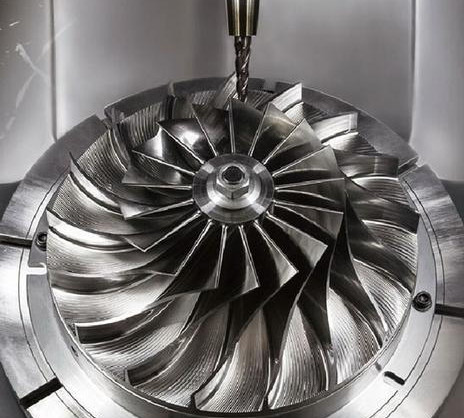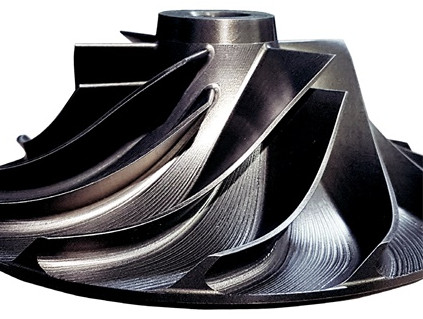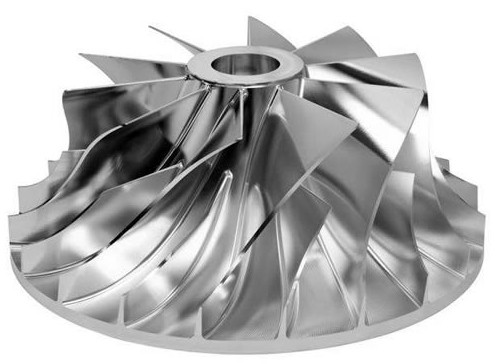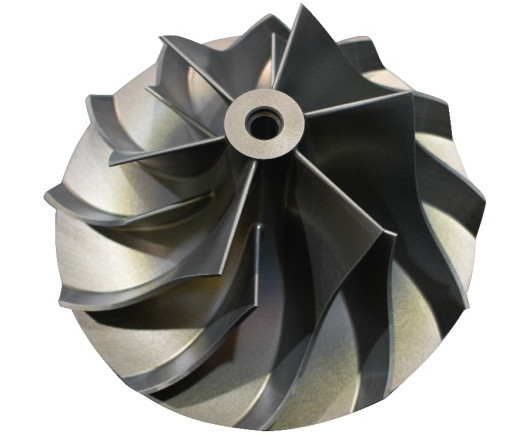Heat treatment is a critical process in enhancing the mechanical properties and performance of high-temperature alloy impellers produced through precision casting. These components, often used in aerospace, gas turbines, and other high-performance applications, require precise control of heat treatment parameters to achieve optimal strength, fatigue resistance, and dimensional stability. This guide outlines a systematic approach to optimizing heat treatment processes, focusing on practical steps, detailed parameters, and technical considerations to ensure reliable and high-quality outcomes.
Understanding High-Temperature Alloy Impellers
High-temperature alloys, such as nickel-based superalloys, cobalt-based alloys, or titanium alloys, are widely used for impellers due to their ability to withstand extreme temperatures, corrosion, and mechanical stresses. Precision casting, including investment casting, produces complex impeller geometries with high dimensional accuracy. However, the as-cast microstructure often contains defects such as micro-porosity, uneven grain structures, or residual stresses, which can compromise performance. Heat treatment is employed to refine the microstructure, enhance mechanical properties, and eliminate internal stresses. The optimization process involves tailoring solution treatment, quenching, and aging to the specific alloy composition and impeller requirements.

Key Objectives of Heat Treatment Optimization
The primary goals of heat treatment for high-temperature alloy impellers include:
- Improving tensile strength and fatigue resistance.
- Enhancing creep resistance and thermal stability.
- Reducing residual stresses from casting.
- Refining microstructure for uniform grain distribution.
- Minimizing defects such as incipient melting or distortion.
Achieving these objectives requires a structured approach, balancing temperature, time, and cooling rates while considering the alloy’s metallurgical properties.
Step-by-Step Optimization Process
The optimization of heat treatment for high-temperature alloy impellers involves several sequential steps. Each step is designed to address specific metallurgical challenges and enhance the impeller’s performance.
Step 1: Alloy Composition Analysis
Before initiating heat treatment, a thorough analysis of the alloy composition is essential. High-temperature alloys typically contain elements such as nickel, chromium, cobalt, titanium, or aluminum, which influence phase transformations and precipitation behavior. For example, nickel-based superalloys like Inconel 718 rely on gamma-prime (γ') and gamma-double-prime (γ'') phases for strengthening. Chemical composition analysis, often conducted using techniques like X-ray fluorescence (XRF) or inductively coupled plasma (ICP) spectroscopy, ensures that the alloy meets the required specifications. This step guides the selection of heat treatment parameters to avoid issues like phase instability or excessive grain growth.
Step 2: Solution Treatment Optimization
Solution treatment dissolves secondary phases and homogenizes the microstructure, preparing the alloy for subsequent aging. The process involves heating the impeller to a high temperature, holding it for a specified duration, and then rapidly quenching it to lock in the supersaturated solid solution.
| Parameter | Typical Range | Considerations |
|---|---|---|
| Temperature | 950–1150°C (depending on alloy) | Must be below the alloy’s melting point to avoid incipient melting. For Inconel 718, 980–1050°C is common. |
| Soaking Time | 1–4 hours | Longer times ensure phase dissolution but may cause grain growth. Optimize based on impeller size and alloy. |
| Heating Rate | 5–10°C/min | Controlled heating prevents thermal shock and cracking. |
For nickel-based superalloys, solution treatment at 980°C for 1–2 hours is often effective, followed by rapid quenching in water or oil. For titanium alloys, temperatures around 900–950°C may be used to avoid excessive beta-phase transformation. The key is to select a temperature that maximizes phase dissolution while minimizing defects like micro-cracking or distortion.
Step 3: Quenching Process Control
Quenching rapidly cools the impeller to retain the supersaturated solid solution, preventing unwanted phase precipitation. The quenching medium (water, oil, or polymer) and temperature significantly affect the outcome. Water quenching at 20–30°C provides the fastest cooling rate but may induce high residual stresses, particularly in complex impeller geometries. Polymer quenching, at 60–100°C, offers a slower cooling rate, reducing stress but potentially compromising hardness. The choice of medium depends on the alloy’s sensitivity to thermal shock and the desired mechanical properties. For example, nickel-based alloys often tolerate water quenching, while titanium alloys may require oil to minimize distortion.
Step 4: Aging Treatment Optimization
Aging promotes the precipitation of strengthening phases, such as γ' in nickel-based alloys or alpha-2 in titanium alloys. This step is critical for achieving high strength and creep resistance. Aging is typically conducted in two stages for complex alloys:
- Primary Aging: Conducted at a higher temperature (e.g., 720°C for Inconel 718) for 8–12 hours to precipitate coarse γ' particles.
- Secondary Aging: Performed at a lower temperature (e.g., 620°C) for 8–10 hours to form finer γ'' particles, enhancing strength.
The aging parameters must be optimized to balance strength and ductility. Over-aging can lead to phase coarsening, reducing strength, while under-aging may not fully develop the precipitate structure. For example, Inconel 718 impellers are often aged at 720°C for 8 hours, followed by cooling to 620°C and holding for 8 hours, achieving a tensile strength of approximately 1300 MPa.
Step 5: Microstructure and Mechanical Property Evaluation
After heat treatment, the impeller’s microstructure and mechanical properties must be evaluated to ensure the process meets specifications. Techniques such as optical microscopy, scanning electron microscopy (SEM), and X-ray diffraction (XRD) are used to analyze grain size, phase distribution, and defect presence. Mechanical testing, including tensile strength, hardness (e.g., Vickers or Brinell), and fatigue resistance, verifies performance. For instance, a well-optimized heat treatment for a nickel-based alloy impeller should yield a uniform γ' phase distribution with grain sizes of 50–100 μm and a hardness of 350–400 HV.
Step 6: Process Validation and Iteration
Validation involves comparing the impeller’s properties against design requirements. If discrepancies are found, parameters such as solution temperature, soaking time, or aging conditions may need adjustment. For example, if fatigue resistance is below target, increasing the secondary aging time may enhance γ'' precipitation. Iterative testing ensures repeatability and consistency across production batches.

Practical Considerations for Heat Treatment
Several practical considerations influence the success of heat treatment optimization:
- Furnace Calibration: Use NADCAP-accredited furnaces with precise temperature control (±5°C) to ensure uniformity.
- Atmosphere Control: Vacuum or inert gas (e.g., argon) atmospheres prevent oxidation in nickel-based alloys.
- Impeller Geometry: Complex geometries may require fixtures to minimize distortion during quenching.
- Batch Consistency: Ensure uniform heating and cooling across multiple impellers in a batch.
These considerations enhance process reliability and reduce variability in the final product.
Case Study: Heat Treatment of Inconel 718 Impeller
To illustrate the optimization process, consider an Inconel 718 impeller used in a gas turbine. The following parameters were applied:
| Stage | Parameter | Value |
|---|---|---|
| Solution Treatment | Temperature / Time | 980°C / 1.5 hours |
| Quenching | Medium / Temperature | Water / 25°C |
| Primary Aging | Temperature / Time | 720°C / 8 hours |
| Secondary Aging | Temperature / Time | 620°C / 8 hours |
Post-treatment testing revealed a tensile strength of 1350 MPa, yield strength of 1100 MPa, and elongation of 15%, meeting aerospace standards. Microstructural analysis showed a fine γ' and γ'' distribution with minimal defects, confirming the effectiveness of the optimized parameters.

Conclusion
Optimizing heat treatment for high-temperature alloy impellers after precision casting is a systematic process that requires careful control of alloy composition, solution treatment, quenching, aging, and evaluation. By tailoring parameters to the specific alloy and impeller requirements, manufacturers can achieve superior mechanical properties, including high strength, fatigue resistance, and thermal stability. The outlined steps, supported by precise parameters and practical considerations, provide a reliable framework for producing high-performance impellers for demanding applications.
